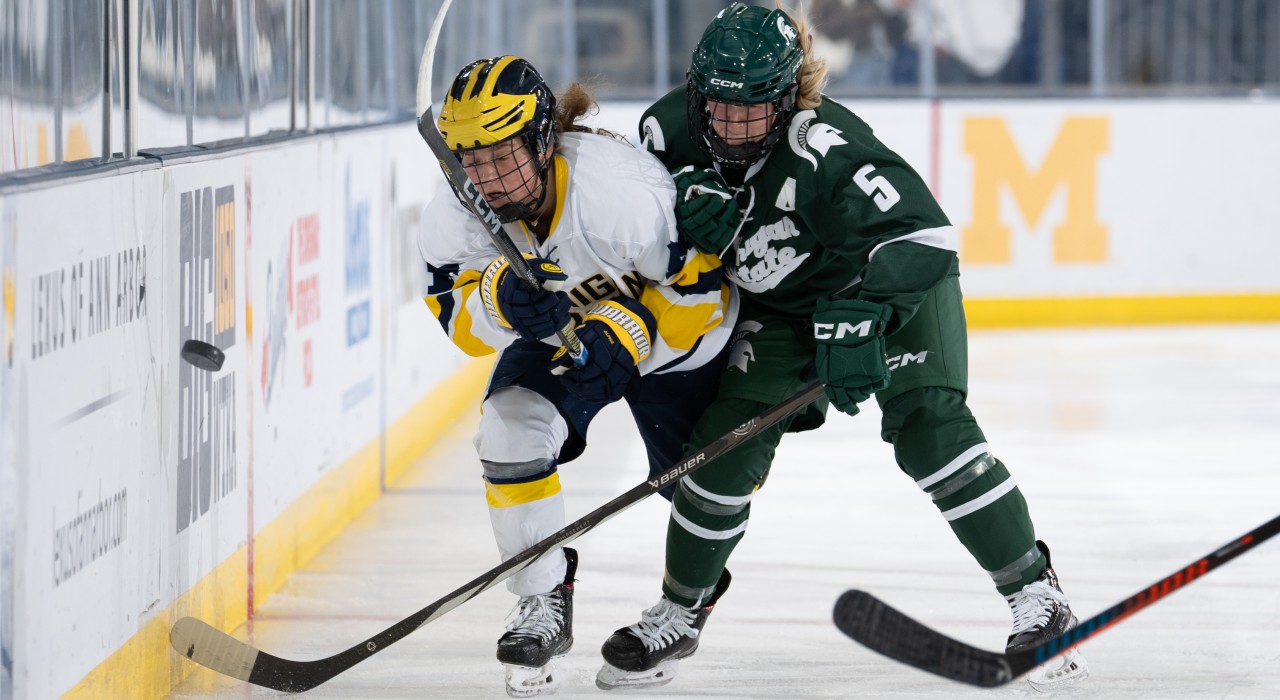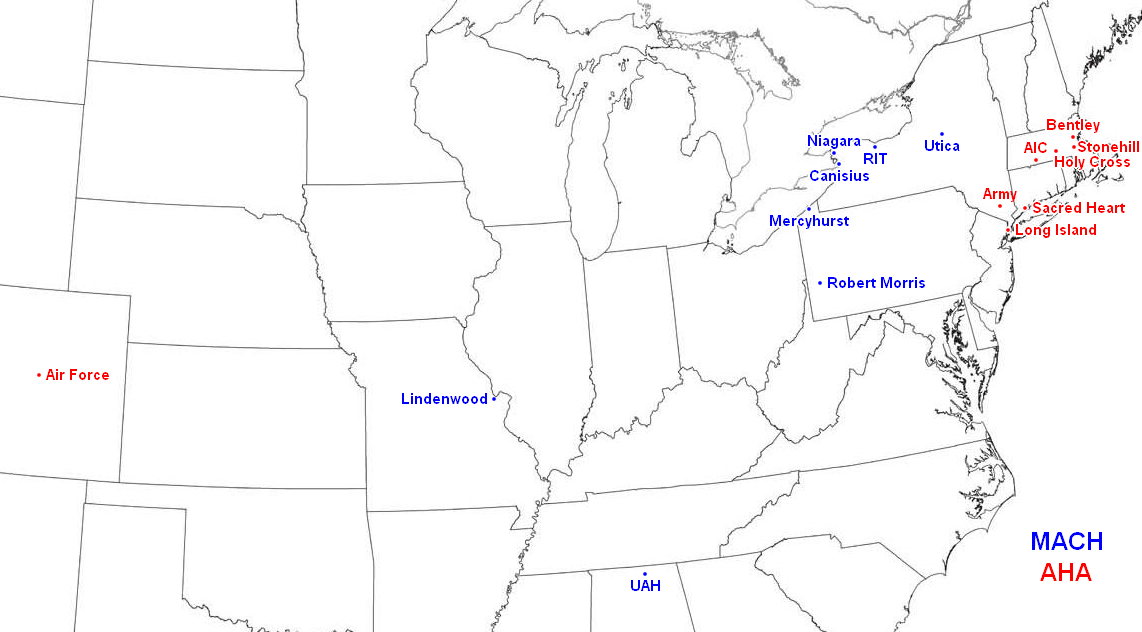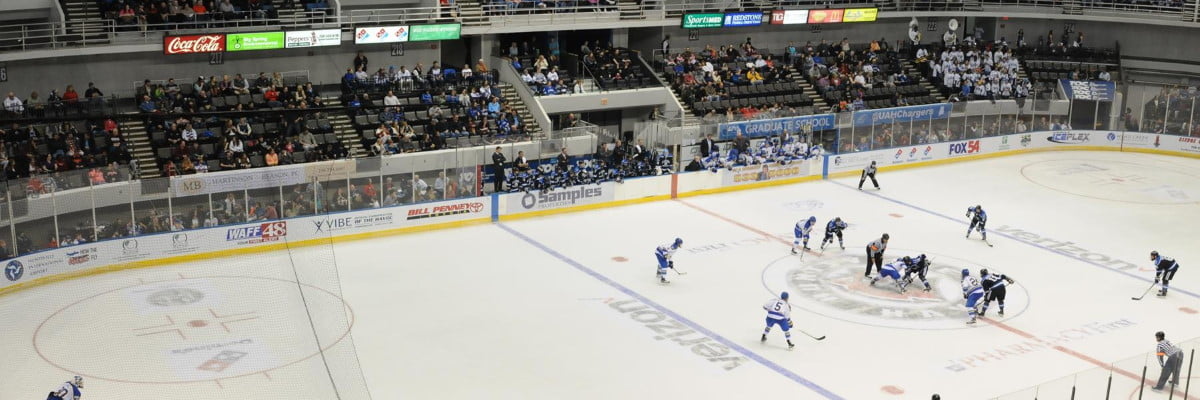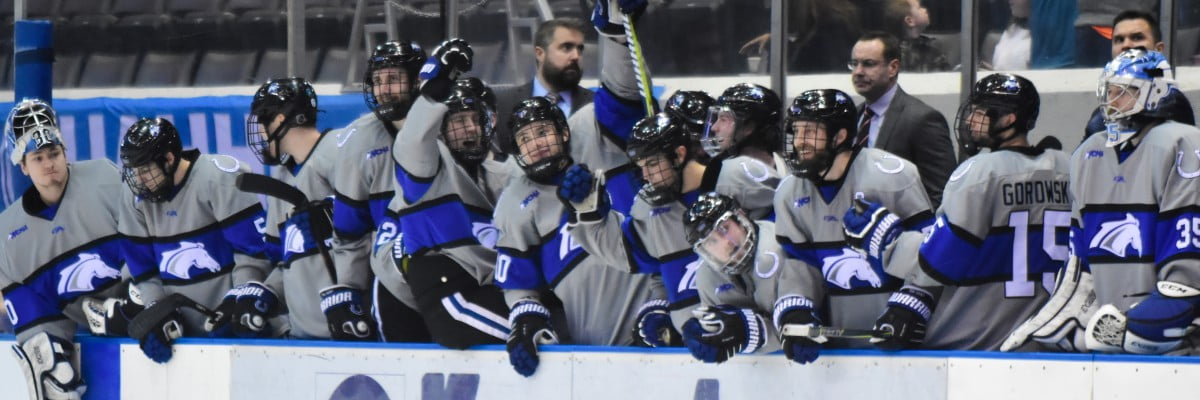Let me preface this by saying I expect none of this to happen. But as we are in the fourth season in which UAH has “suspended” the men’s varsity hockey program after failing to find a conference, dreaming is about all we have.
I was looking at how the independent NCAA Division I men’s hockey teams were faring this season, and it’s not great. The independents are playing at home about 30 percent of the time, which is about how it was for UAH when it was a D-I independent from 2010-13. They are also a combined 12-32-4 so far against teams in conferences, a .292 win percentage. Last season, the independents were 35-72-14 (.347) against the six conferences.
Adding insult to injury, independent programs had an average of nine players enter the transfer portal over the summer, more than double any of the conference based teams.
It continues to make me wonder whether UAH would have been able to build a viable program if the university had decided to stick it out as an independent. Good luck building a program without a conference in this day and age, and that’s not even considering things like NIL or payments to players in Division I.
But as I looked at the NCAA college hockey landscape and the setup of one conference in particular, it occurred to me that if UAH actually wanted to get back into hockey, it stood a better shot at viability if it created a women’s hockey program instead.
NCAA women’s hockey has two levels: National Collegiate (essentially a combined Divisions I and II, commonly referred to as Division I) and Division III. UAH would be in National Collegiate. This season, there are 44 programs at the National Collegiate level in five conferences (there are no independents). Delaware will make it 45 next season.
The conference in question is Atlantic Hockey America. This season, the men’s Atlantic Hockey Association and the women’s College Hockey America, which had shared some organization and administrative roles, formally merged into one brand.
UAH was a member of the men’s College Hockey America conference from 1999-2010, when the men’s league ceased, and tried to join Atlantic Hockey in 2021 but failed, leading to the program’s suspension.
AHA women has room to grow
I have opined before that Atlantic Hockey should have split, which would have given UAH a real option for a new conference home. The problem (which I should have recognized before) is that the NCAA has a moratorium on new single-sport conferences, meaning the AHA couldn’t spin off a new men’s hockey league if it wanted to unless all that league’s members are part of the same multi-sport conference (like the Big Ten).
The AHA men’s league has 11 teams, and although it will down to 10 when American International drops its program to Division II next year, the conference has been hesitant to add any others, including notable in-region independents like Long Island and Stonehill.
The women’s league has six teams, Lindenwood, Mercyhurst, Penn State, RIT, Robert Morris, and Syracuse, with a seventh, Delaware, joining when its program starts in 2025. It has room to grow, and Lindenwood, being in the St. Louis area, is the closest NCAA women’s hockey program to Huntsville.
And, just like with the men’s program, having a conference home, a championship to play for, and a path to the NCAA tournament would be critical for any chance to build a viable program.
The time is also right because of the continued growing popularity and participation in women’s hockey in particular and women’s sports in general.
Could UAH actually do it?
(Assuming UAH is actually interested, of course.)
First, the program would require funding to start up. The most logical source would be from the UAH hockey alumni group, which had spearheaded a financing plan for the men’s team if it had joined a conference. Would they be open to kickstarting a women’s team?
Second, this new Charger team would need to decide on where to play. Returning to Propst Arena at the Von Braun Center would be great, of course. The Huntsville Ice Sports Center has a 1,000-seat rink and has funding approved by the Huntsville City Council to expand with two more rinks.
Third, UAH would have to be accepted into a conference, specifically Atlantic Hockey America. That league would have to be open to accepting a new UAH program as a travel partner for Lindenwood and provide further stability. The AHA is bringing in Delaware as that program is just starting up, so there is ppreced
So there are significant ifs to UAH to having the first varsity women’s hockey program in the South, distinguishing the university once again as it did with the men’s program for all those years.
Another consideration: There have been rumors of UAH starting a football program soon but the University of Alabama System Board of Trustees has been reluctant to give the green light. I’m not sure if they’d be gung-ho about UAH adding women’s hockey when they’ve been cool to men’s hockey’s existence before.
But if UAH is allowed to start up a football program, there will likely need to be a women’s sport added for Title IX compliance. Women’s hockey would be a nice way to do it.
I think it’d be fun. And more likely to succeed.
Photo at top: Players from the University of Michigan and Michigan State University club women’s hockey teams battle for the puck. Photo by Jaime Crawford/JC Sports Photography











